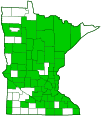blue dasher
(Pachydiplax longipennis)
Conservation • Description • Habitat • Ecology • Distribution • Taxonomy
Conservation Status |
|
|||||||
| IUCN Red List | not listed |
|||||||
| NatureServe | N5 - Secure SNR - Unranked |
|||||||
| Minnesota | not listed |
|||||||
Description |
||
Blue dasher is a widespread, fairly common, small to medium-sized, 1⅛″ to 1¾″ long skimmer. The upper (dorsal) surface of the thorax is brown with greenish-yellow markings. There is a thin, pale, central (middorsal) stripe and two wider shoulder stripes. The sides of the thorax are greenish-yellow with three dark brown stripes. The abdomen of the mature male is tapered and powdery blue (prunose) with a black tip. The female abdomen is much shorter, parallel-sided, and brownish-black. On abdominal segments 3 through 8 there is a pair of thin yellow dorsal stripes. Segment 9 is unmarked and segment 10 is pale. The face is white. The top of the upper part of the face (frons) is metallic blue. The compound eyes meet along a long margin at the top of the head. They are blue or green in males, reddish-brown in females. The wings are clear except for an amber patch at the base and a long dark stigma. They sometimes develop an uneven brownish-yellow tint. The forewings are slightly narrower than the hindwings. Immature males have reddish-brown eyes and a brownish-black abdomen which becomes increasingly prunose as it matures. It usually takes about 9 days for the pruinescence to develop. Females sometimes develop pruinescence but much more slowly. |
||
Size |
||
Total length: 1⅛″ to 1¾″ |
||
Similar Species |
||
| Eastern pondhawk (Erythemis simplicicollis) male develops pruinescence on the thorax as well as the abdomen. The face is green. | ||
Habitat |
||
Lakes, ponds, slow streams, ditches, and possibly bogs |
||
Ecology |
||
Season |
||
Early June to early September |
||
Behavior |
||
They perch on erect, slender plant stems. When perched their wings are lowered. Males joust over water by flying under an opponent and rising, forcing the opponent away from the water surface. |
||
Life Cycle |
||
After mating the females deposits eggs by flying close to the water surface and dipping the tip of her abdomen into water. While doing this, the male hovers nearby, standing guard. After the eggs hatch the young (naiads) live in submerged vegetation. When they mature the adults emerge from the water at night. |
||
Naiad Food |
||
Aquatic insect larvae and freshwater shrimp |
||
Adult Food |
||
Mosquitoes, flies, butterflies, moths, mayflies, and other soft-bodied flying insects. |
||
Distribution |
||||
|
Sources |
|||
| 12/4/2022 | ||||
Occurrence |
||||
Fairly common |
||||
Taxonomy |
|||
Order |
Odonata (dragonflies and damselflies) | ||
| Suborder | Anisoptera (dragonflies) | ||
Superfamily |
Libelluloidea | ||
Family |
Libellulidae (skimmers) | ||
Genus |
Pachydiplax | ||
Synonyms |
|||
|
|||
Common Names |
|||
blue dasher |
|||
Glossary
Frons
The upper front part of an insect’s face, roughly corresponding to the forehead.
Naiad
The aquatic larval form (nymph) of a dragonfly, mayfly, or stonefly.
Pruinescence
A waxy bloom that covers the underlying coloration and gives a dusty or frosty appearance.
Visitor Photos |
|||||
Share your photo of this insect. |
|||||
| This button not working for you? Simply email us at info@MinnesotaSeasons.com. Attach one or more photos and, if you like, a caption. |
|||||
Alfredo Colon |
|||||
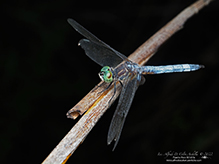 |
|||||
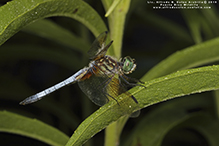 |
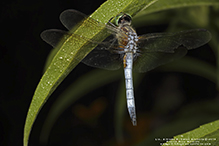 |
||||
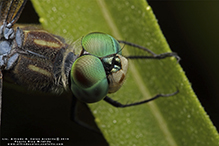 |
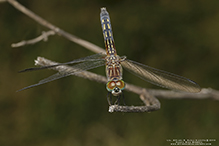 |
||||
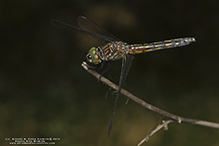 |
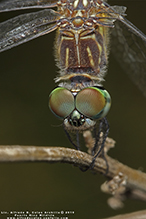 |
||||
Lynn Rubey |
|||||
| An Adult Female Blue Dasher in the Obelisk position to cool off during the hot and humid summer day in The Big Stone National Wildlife Refuge. | 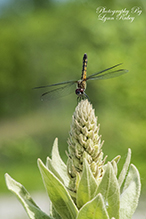 |
||||
| An immature female Blue Dasher using the Obelisk position as well as her wings as a shield to reflect the sun's heat from her head and thorax in an effort to cool down as she is perched from a chewed off bush in The Big Stone National Wildlife Refuge. The refuge uses goats in a program to get rid of invasive plants and bring back and encourage native prairie plants to thrive. | 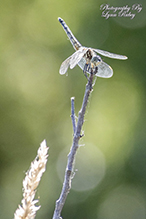 |
||||
| An adult male Blue Dasher resting on a grass stalk between Pool 7 and the West Pool in The Big Stone National Wildlife Refuge. | 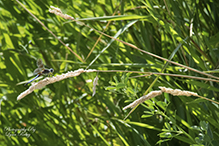 |
||||
MinnesotaSeasons.com Photos |
|||||
Male |
|||||
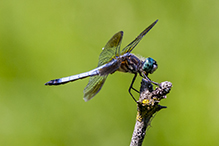 |
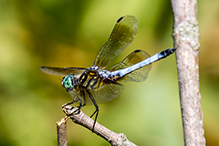 |
||||
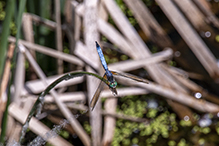 |
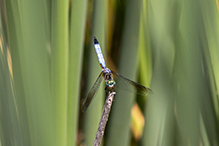 |
||||
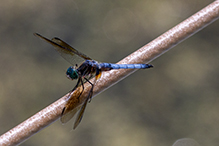 |
|||||
Female |
|||||
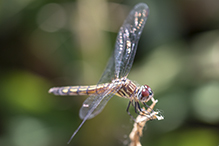 |
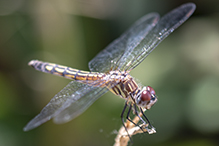 |
||||
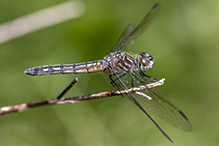 |
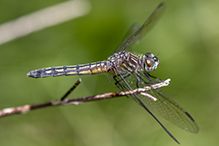 |
||||
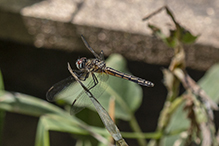 |
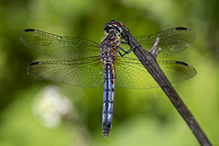 |
||||

Slideshows |
||
| Blue Dasher DianesDigitals |
||

|
||
About
Copyright DianesDigitals |
||
| Pachydiplax longipennis (Blue Dasher) Allen Chartier |
||

|
||
| Blue Dasher victor Fazio |
||

|
||

Visitor Videos |
|||
Share your video of this insect. |
|||
| This button not working for you? Simply email us at info@MinnesotaSeasons.com. Attach a video, a YouTube link, or a cloud storage link. |
|||
Other Videos |
|||
| Blue Dasher (Pachydiplax longipennis) ~ Dragonfly Close Up Wandering Sole Images |
|||
About
Published on Jun 26, 2015 A blue dasher (Pachydiplax longipennis) at Woodhaven Swamp in Belcarra Regional Park. |
|||
| dragonfly (Pachydiplax Longipennis) Andrew Baita |
|||
About
Uploaded on Aug 16, 2010 dragon fly shot with canon t1i with 100mm macro 2.8 lens |
|||
| Blue Dasher - August 4, 2013 Don Gagnon |
|||
About
Published on Aug 5, 2013 Blue Dasher (Pachydiplax longipennis), Water Garden, Gagnon Wildlife Habitat, Pottersville, Somerset, Massachusetts, Sunday morning, August 4, 2013, 11:48 AM / 11:50 AM / 11:53 AM / 11:57 AM - Canon PowerShot SX50 HS MvI_38829 / MvI_38830 / MvI_38847 / MvI_38848; 3:33 min. |
|||
| Soul Mate (Blue Dasher) seahue |
|||
About
Published on Jul 21, 2010 Blue Dasher dragonfly. This is the only dragonfly that lets me get really close. The Blue Dasher (Pachydiplax longipennis) is a dragonfly of the skimmer family. As do all dragonflies, they have excellent vision because of their large multi-faceted eyes. They sometimes orient themselves in different positions relative to the sun, either to maximize or minimize heat gain, depending on temperature. They tip the abdomen upward in what is called the "obelisk" position.As they age, their wings are tattered from wear and tear. Music MIX from CCMixter Please remove your headphones I miss you...byy dydjej_inja http://ccmixter.org/files/dydjej_inja/25648 |
|||
| Female Blue Dasher Dragonfly, Pachydiplax longipennis, San Diego, California Melvin Wei |
|||
About
Published on Jun 26, 2012 I saw this dragonfly in the riparian habitat of Los Penasquitos Canyon Preserve. This is one of the more common dragonflies I've seen in San Diego county, although they generally dart around so fast I can't see the level of detail that I can with my camera at 14x optical zoom. It's not as conspicuous as the male flame skimmer dragonfly I posted a video of before, but the blue dasher is beautiful in its own right when you look at it for a few minutes up close. It took me a long time to identify this as a female blue dasher dragonfly (Pachydiplax longipennis), but based on the photos on various peoples' pages online it seems like the phenotypes can vary quite a bit for at least this species. One thing I noticed about dragonflies is that they keep returning to the same perch to survey their territory. They don't do things in a randomized fashion. I knew that male dragonflies were territorial, but perhaps females have the same concepts in their heads regarding to hunting rights and territory. I have a video of a male blue dasher dragonfly too, dated 2012-9-11. |
|||


Last Updated:
